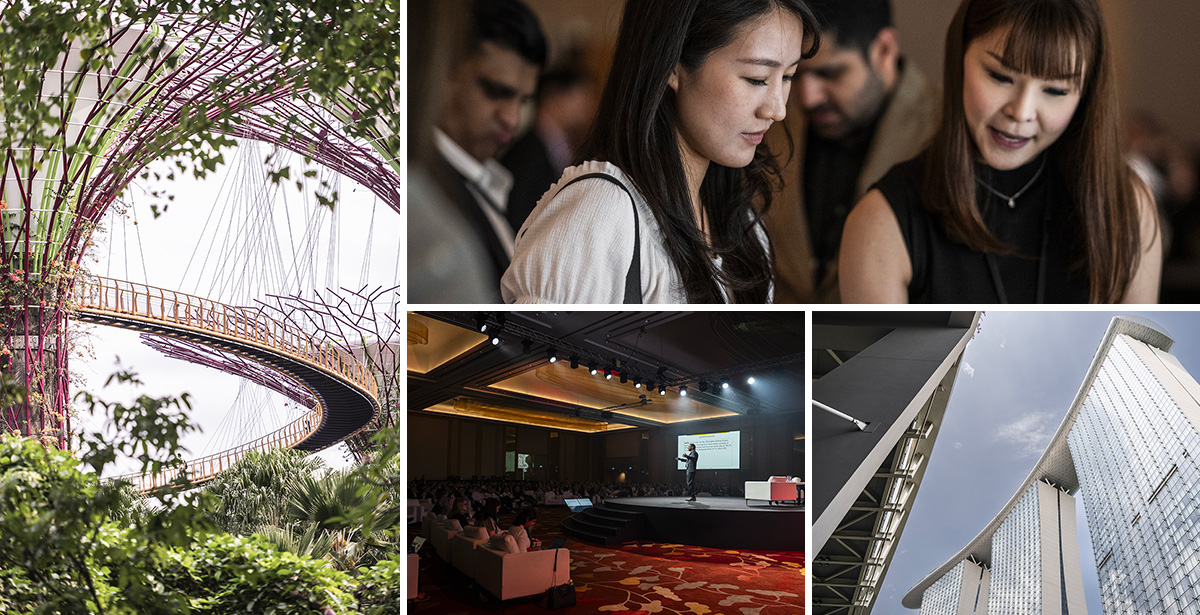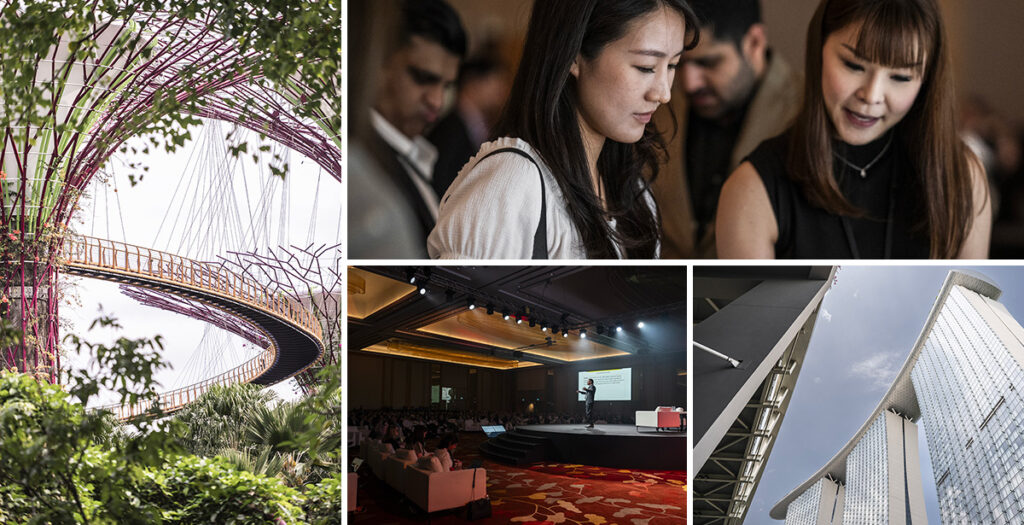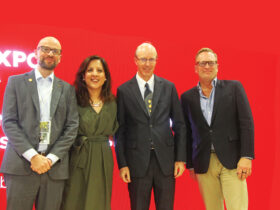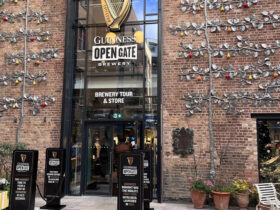

Welcoming attendees to TFWA Asia Pacific Exhibition & Conference in Singapore in mid-May, Margueritte remarked that since overtaking Europe as the leading geography, Asia Pacific has been, and still is, the growth engine of the industry. “For more than a decade, this region has set trends for passenger flows and, more than this, has helped raise airport and retail standards.”
Asia Pacific most important region in duty free
Talking about the growth in the region, he said that the TFWA event has evolved to reflect that. “From providing a platform for European and American brands who wanted to increase their exposure in Asia Pacific, TFWA Asia Pacific Exhibition & Conference is now not only a launchpad for regional players looking to expand into new markets within Asia Pacific, but also into Europe, the Middle East and the Americas. However, we seem to be living in an uncertain world where previous assumptions no longer apply, and international regulations can change from one day to another. Yet, I believe there has rarely been a better time for all the stakeholders in our industry to join forces and optimise the shopping journey of our travellers. Especially in Asia Pacific a combination of factors – economics, demographics and technology – is aligning to help us maximise the appeal of our brands and shops for a new kind of traveller. Let’s spend a moment together to examine those three key factors for our industry.”

A measured yet positive outlook for the future
The TFWA president reiterated, “We’ve always wanted to see what lay over the next hill or on the other side of the river, to discover how others live and what we can learn from them. Even today, that urge to explore drives billions of people to travel aboard, spending trillions of dollars on the way, and they do that consistently. Figures show regular, long-term international passenger growth of three to four percent every year, barring the occasional interruption. That means passenger numbers are doubling every 20 years. According to ACI’s latest figures, by 2045 we should have 18 billion people floating above our heads. Over twice the total population currently hosted by planet Earth.”
| China and India as leading lights in Asia Pacific “Steady is not a word that has featured much in the economic headlines recently. But in this region, there are two economic superpowers with the critical mass to drive consumption for decades. I’m talking about India and China, of course. They have the world’s two largest populations, making up more than a third of the entire planet. China’s population has stopped growing, but it will remain the second largest globally for the next century. India’s will continue to rise till around 2050. More importantly, both countries have a sizeable middle class.” Margueritte quoted that China’s middle class is made up of over 700 million people and is the world’s biggest, counting more than half of the country’s citizens. “[China has] grown fast over the last 20 years, although a weak property sector, a volatile stock market and higher unemployment have knocked consumer confidence recently. That has affected Chinese interest in overseas travel, but passenger numbers are rising and should reach nearly 200 million by 2028. Two thirds of them will be Gen Z consumers, who have a strong interest in seeing other countries and firm ideas about what they expect from their trip. Actually, passenger volume just showed a strong growth in the first quarter of this year. Chinese airlines reported 18.9 million international travellers, up 34% year-on-year and 4.5% higher than the same period in 2019.” Comparing the two superpowers, he went on to say that India’s middle class is smaller than China’s at about 430 million, but it’s on the way up. “From less than a third today, around 60% of Indians will be middle class by 2047, their incomes boosted by the sheer dynamism of one of the world’s fastest-expanding economies. Like their Chinese counterparts, they love to travel. In 2024, outbound passenger numbers reached 70 million, but with close to 40,000 new passports being issued every day in India, that figure is rising fast. By 2028, we’re looking at more than 100 million international travellers from India.” The TFWA President then explained his reasons for feeling optimistic about the state of the industry, highlighting that in China and India alone, in the next 2-3 years we’ll see more than 300 million people passing through airports who are keen to get abroad and explore other countries. “They’ll be young, relatively affluent and open to new cultures and new experiences. Unlike those who preceded them, they’re less inclined to join large groups, preferring to travel independently or with family or friends. Our own TFWA research on international travellers tells us that many are impulsive in their habits and probably less inclined to plan ahead. In this region, if 62% of travellers planned their purchase in 2019, today just 47% do so, and that percentage is declining.” A new generation of travellers Touching on this new traveller, Margueritte described them as confident and living in the moment. “The high proportion of Gen Z-ers among them means we know something about their habits. We know they’re digital natives, with their smartphones always at the ready. If they’re Indian, 64% of them will actually be sharing photos or video-calling as they shop, discussing options and seeking others’ thoughts on what they see in-store. Optics count a lot for this group, who are looking for visually striking, immersive environments that combine physical and digital elements.” Cautioning against complacency, Margueritte stressed that this is not enough. “A recent survey by the World Travel and Tourism Council reveals that over four in every five global travellers believe sustainable travel matters. 75% state they’re willing to travel more sustainably next year and Gen Z-ers are among them. In travel retail, sustainable initiatives have multiplied in the last few years as our industry takes this subject to heart. Sustainability must be integral to everyone’s strategy in this sector as we plan for the future. At TFWA, we are willing to play our part. I’m happy to share that the TFWA Asia Pacific Exhibition & Conference you’re attending today tracks its carbon footprint, its waste diversion, sources over 70% of its food locally or regionally and that 100% of the paper it uses is recycled.” Crystalising these concepts into clear takeaways, Margueritte stated that it’s clear that a traditional, brick-and-mortar airport duty free store won’t work so well for this new generation. “They see shopping as more than purely transactional, more than the simple accumulation of possessions. It needs to be an experience, something to enjoy and share that stimulates the senses and offers the excitement of newness. This is underlined by the fact that if Gen Z’s footfall in travel retail is above that of other generations, their conversion rate and average spend are significantly lower. Obviously, this group isn’t finding what it wants in our stores, or it’s not attracted enough by what it sees.” Now is the time to welcome and adapt to change Commenting on how the industry is already adapting to the change, the TFWA President remarked that it’s good to see how some operators are trying to inject more excitement, developing hybrid retail concepts at airports for example. “Studies show that having a drink or something to eat while waiting for a flight is increasingly popular, attracting more than half of all travellers today. Food and beverage are currently the fastest growing commercial activity in Asia Pacific airports, where high-quality meals in a quick-service format work well. Introducing a retail element into the food and beverage offer is a logical development, enabling travellers to buy a bottle of the wine they’re enjoying as they eat, for example. It plays to the desire for a multi-sensory experience, which is why we’re seeing more of this kind of outlet at airports these days.” Margueritte stated that an issue that affects us all is that we’re making travellers wait too long to get airside at airports. “Many of them face lengthy queues for check-in, immigration, security and boarding procedures. And things aren’t getting any better. Last year’s TFWA Kearney study told us that dwell time among passengers at Asia Pacific airports has dropped significantly since 2018. Free time available for shopping or eating has shrunk from 60 minutes to just 44. Procedural airport activity continued to take a full hour. As travellers are no longer choosing to arrive two hours before their flight, this represents 26% less “shopping” dwell time, which translates directly into 13% lost spend per passenger, affecting the non-aeronautical revenues like travel retail that drive all of our bottom lines. There’s little point in offering fantastic retail experiences if passengers are rushing past the airport shop to catch their planes. It’s in our own financial interests, whether we work for airport authorities, retailers or brands, to invest in seamless passenger-processing at airports. We have a great example here in Singapore with Changi Airport, where most travellers take only a few minutes to get airside.” He then asked; “why not tap Changi’s expertise this week on easing passenger progress through the airport terminal?” New technology, new expectations Margueritte then stated that if we succeed in cutting passenger-processing time, it will mean exploiting the potential of cutting-edge technology. “We are starting to see the emergence of technologies that will enable us to get this new generation of travellers spending on their journeys. I’m not talking about existing tools like the smart mirrors that help shoppers try out clothing or beauty products, although this kind of hardware is already proving its value. I’m referring to artificial intelligence, the capabilities of which we know are expanding almost daily. Imagine being able to access in real time shoppers’ in-store transaction histories and demographics to detect browsing patterns and deliver personalised recommendations or special offers on the go. Imagine adapting your range, your brand display, even your brand portfolio or your pricing at the departure or arrival gate of each specific flight. Imagine sending a tailored promotional offer directly to the passenger’s smartphone just as they reach the airport. This could be a product of course, but also an experience, a game, even a loyalty gift. That’s the kind of capability that AI can give us today. It allows us to provide personalisation at scale to a generation of digitally savvy travellers who expect a more relevant, rewarding experience. And we can do it either before they travel or while they’re in-store, catering to their impulsive, in-the-moment instincts.” Margueritte was then careful to stress that “this is just the beginning” and that “as AI evolves and we learn how to use it better, we could see the emergence of new ways to shop, retail formats that are better adapted to travellers’ needs and different, more effective techniques to communicate with them before, during and after their journeys.” “However,” he continued, “our ability to use this technology depends on our readiness to share and make better use of data – the elephant in the room for travel retail. To provide the seamless, personalised service that new shoppers demand, we need the numbers. Brands and retailers on the high street have found ways to do this, leaving travel retail and the airport shopping experience way behind. That should be our wake-up call. We need to adopt a more collaborative mindset, joining forces to professionalise our industry and share the shopper data that underpins any serious retail business today. We at TFWA shall play our part in this process, taking radical steps to move things forwards.” Stressing TFWA’s consistent focus on co-operation and networking as an industry essential, Margueritte shared how co-operating more effectively is what this week in Singapore is all about. “Bringing the industry together to discuss joint interests, explore opportunities and tackle common problems is one of TFWA’s core missions. As we sit here this morning, we’re at the epicentre of travel retail’s most important region, rubbing shoulders with many of our industry’s star brands, its most influential operators and leading airports. So, seize the day and make the most of this time with your fellow professionals.” He reiterated that three key factors – economics, demographics and technology will play an important role in the coming years. “If we address them properly, they should generate significant value growth for our industry. We might have, here and there, some geopolitical news that could test our confidence, but in the end, these three trends will remain and will be paramount to our success.” Margueritte concluded his address with a quote from Henry Ford: “Coming together is a beginning. Keeping together is progress. Working together is success.” |











Leave a Reply